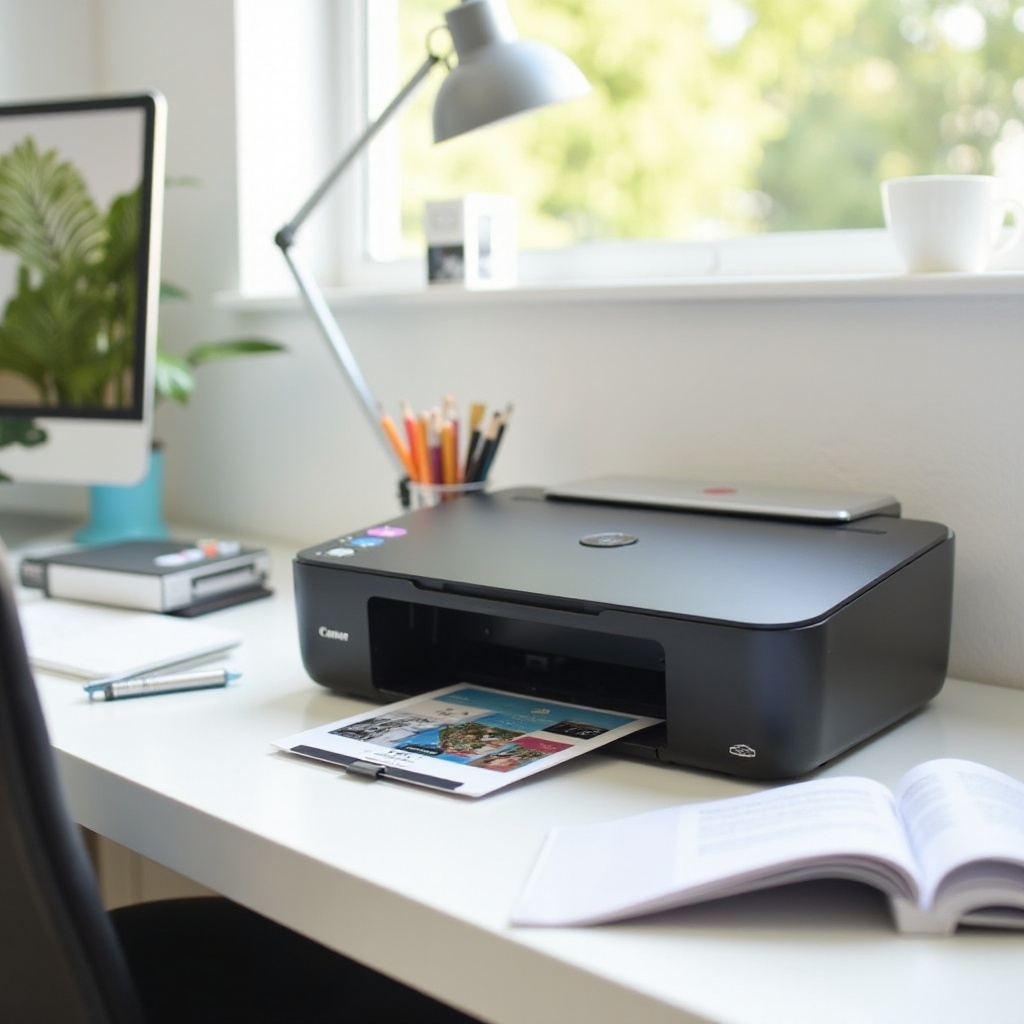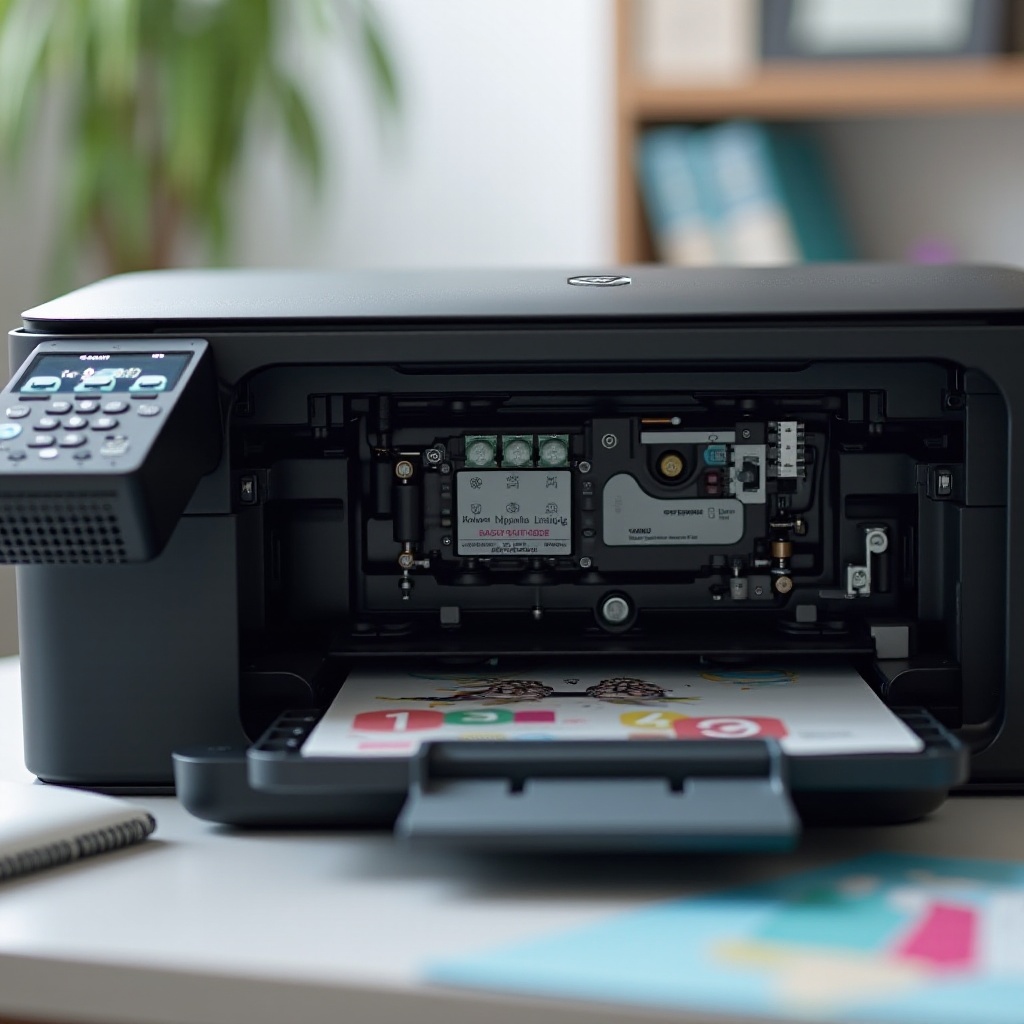Introduction
Canon PIXMA printers are celebrated for their reliability and high-quality output. However, like any piece of technology, they can face occasional issues. Understanding and troubleshooting these common problems—such as print quality issues, connectivity problems, and paper jams— can save you both time and frustration. This guide offers practical solutions to keep your Canon PIXMA printer running efficiently.

Diagnosing Common Issues
Effective troubleshooting begins with identifying the problem. Canon PIXMA printers may exhibit print quality issues, connectivity errors, paper jams, or ink cartridge malfunctions. For instance, blurry, streaked, or discolored prints indicate print quality issues, while connectivity problems might manifest as Wi-Fi connection failures or frequent disconnections. Recognizing these symptoms is crucial for accurate diagnosis and swift resolution.
Print Quality Problems
Print quality issues can severely impact your documents and photos. Understanding how to fix these can restore your printer’s performance.
Fixing Blurry Prints
Blurry prints are often due to incorrect print settings. Ensure that the paper type setting matches the paper loaded in the printer. Additionally, run a print head alignment procedure from the printer’s settings to enhance color precision.
Addressing Streaks and Lines
Streaks and lines generally occur due to clogged print heads. Utilize the printer’s maintenance menu to clean the print heads, typically through a print head cleaning or deep cleaning option. Regular maintenance can prevent these issues from recurring.
Resolving Color Discrepancies
Color issues often stem from ink cartridge problems. Ensure cartridges are correctly installed and ink levels are adequate. Running a nozzle check can identify which colors are affected, allowing you to address the problem effectively.
Connectivity and Communication Issues
Connectivity is vital for modern printers. Troubleshooting these issues ensures smooth operation.
Troubleshooting Wi-Fi Issues
If your printer has trouble connecting to Wi-Fi, verify that the network is functional. Restart both your router and printer. Ensure the printer is within the Wi-Fi range and re-enter Wi-Fi credentials via the printer’s network settings.
Resolving USB Connection Errors
USB connection problems often arise from faulty cables. Check for damages and ensure the cable is securely connected. Try using a different USB port or cable if issues persist, and restart both the printer and your computer.
Fixing Network Setup Problems
For network-related issues, ensure the printer is correctly configured in the network settings. If you’re using a wired connection, check the Ethernet cable for functionality. Sometimes, resetting network configurations can resolve persistent issues.
Paper Jams and Misfeeds
Paper jams are a common but manageable problem. Understanding their causes and solutions can keep your printer running smoothly.
Causes of Paper Jams
Jams can result from improper paper loading, using incompatible paper, or debris inside the printer. Identifying these causes can help you prevent future occurrences.
Steps to Clear Paper Jams
Turn off and unplug your printer before attempting to clear a jam. Gently remove stuck paper, pulling in the paper path direction to avoid internal damage. Check for and remove any remaining fragments.
Preventing Future Paper Jams
To avoid jams, load paper correctly and ensure not to exceed the tray’s capacity. Use the recommended paper type for your printer model and maintain a clean paper feed area to prevent debris buildup.
Ink Cartridge and Printhead Issues
Maintaining ink cartridges and printheads is essential for optimal printer performance.
Replacing Ink Cartridges
Replace cartridges when ink levels are low or empty. Open the printer cover, remove the old cartridge, and insert the new one until it clicks into place. Follow any on-screen instructions if your printer has a display.
Checking Ink Levels
Regularly check ink levels via the printer’s control panel or accompanying software. Keeping spare cartridges can preempt interruptions.
Cleaning Print Heads
Regular printhead cleaning is critical for maintaining print quality. Run a cleaning cycle through the printer’s maintenance settings. If issues persist, manually clean the print heads as per the manufacturer’s guidelines.

Software and Driver Problems
Software and driver issues can hinder your printer’s functionality. Addressing these can resolve various operational issues.
Installing and Updating Drivers
Outdated or corrupt drivers can cause numerous problems. Download the latest drivers from Canon’s official website to ensure compatibility and optimal performance.
Troubleshooting Software Conflicts
Software conflicts can disrupt printer functions. Temporarily disable antivirus software and firewalls to identify if they are the cause. Ensure your computer meets the printer software’s system requirements.
Addressing Firmware Updates
Regular firmware updates can enhance your printer’s capabilities and fix known issues. Check Canon’s website for updates and follow the installation instructions.

Advanced Troubleshooting Tips
For persistent issues, advanced troubleshooting might be required:
Using Canon’s Diagnostic Tools
Canon offers diagnostic tools for PIXMA printers that can automatically detect and repair issues. Access these tools via Canon’s support website or printer software.
When to Seek Professional Help
If all troubleshooting steps fail, it’s best to contact professional support. Canon’s customer service can provide expert assistance to prevent further damage and ensure proper resolution.
Conclusion
Regular maintenance and troubleshooting are key to the longevity and performance of your Canon PIXMA printer. This guide has provided tools and knowledge to address common issues effectively. By following these steps, you can keep your printer in top working condition.
Frequently Asked Questions
How do I fix a Canon PIXMA printer not printing?
First, check that the printer is turned on and properly connected to your computer or network. Ensure that there is paper in the tray and that ink cartridges are not empty. Run a print head cleaning cycle and try printing a test page.
What should I do if my Canon PIXMA printer keeps jamming paper?
Check for any obstructions in the paper feed area and ensure you are using the correct paper type and size. Load the paper properly without exceeding the recommended capacity, and regularly clean the paper feed rollers.
How do I reset my Canon PIXMA printer to factory settings?
To reset your Canon PIXMA printer, navigate to the settings menu and find the ‘Reset’ option. Choose ‘Reset to factory settings’ and confirm the action. This will return your printer to its original configuration, resolving most non-hardware related issues.